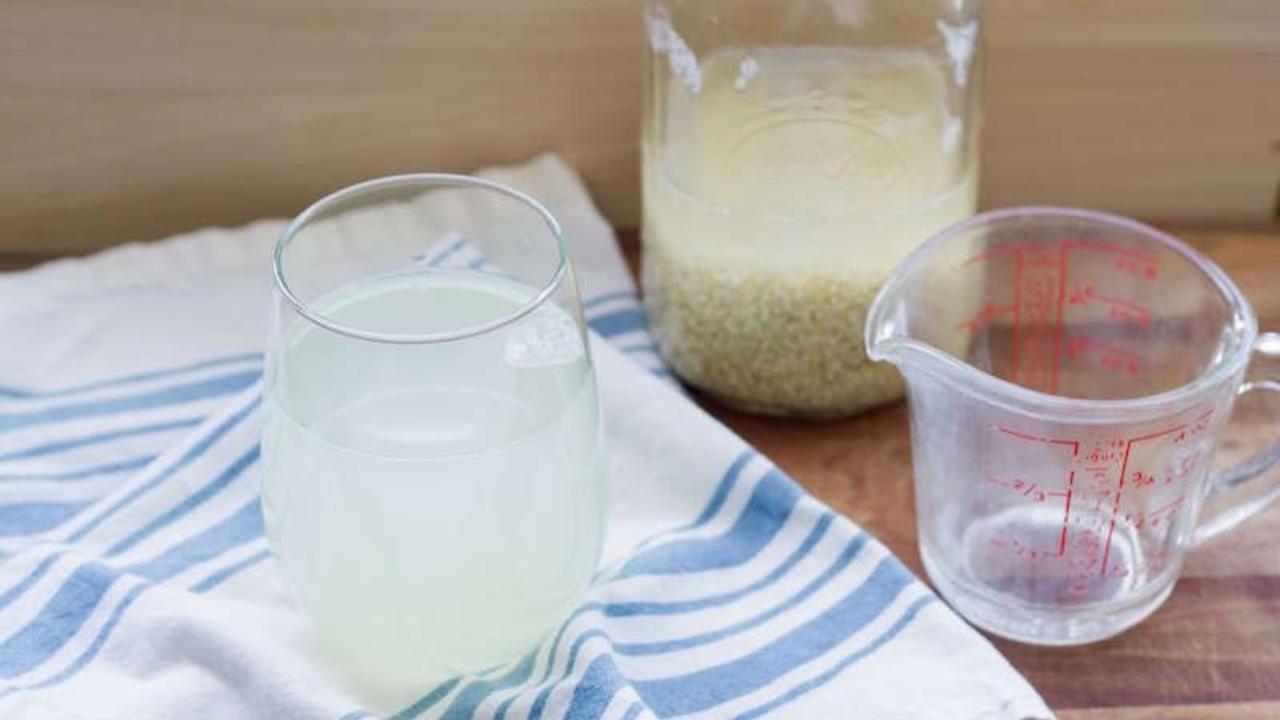Quinoa Rejuvelac – A Probiotic Drink & Fermentation Starter

Yes, yes, I know the name does not sound appealing. Don’t let that scare you off though.
This is definitely worth making, specifically when you’re going to be making a cream or cheese sauce that you want to have some tang like we experience with traditional cheese, yogurt, and buttermilk.
The late Dr. Ann Wigmore, co-founder of the Hippocrates Health Center, popularized Rejuvelac as a beverage in the 1970s.
Today there are a few who still enjoy this beverage, but that's not why I'm sharing it here. I use Rejuvelac to make delicious cultured plant-based cheeses and creams.
Rejuvelac is a fermented liquid made from sprouting wheat, rye, quinoa, buckwheat or other raw grains. By sprouting the whole grains you create a live, non-dairy source of probiotics (aka healthy bacteria) that is used to ferment cheese.

It's this culturing process that will give the vegan cheese richer and sharper flavor, making the taste comparable to traditional dairy-based cheeses. Even if I'm going to buy a vegan cheese, I always opt for a cultured nut cheese, like those from Miyoko's Kitchen.
Bottled rejuvelac from The Rejuvenation Company can be purchased at Whole Foods Market and other health food stores. At Whole Foods Market, I can usually find it with the refrigerated single-serving beverages.
However, it is much cheaper to make your own, and you can make it gluten-free! Unfortunately, store-bought varieties are made with wheat. I use quinoa. I like it because I always have quinoa on hand, but the real reason is that I heard it's the easiest. Although I haven't tried them myself, the word is that other grains can be a little finicky.

It does take a couple of days to complete the fermentation process, but making your rejuvelac is really a simple process. Try it out and then use it to make either a cheesy recipe, like Basic Cashew Cream Cheese or something that you want to have a tang, like the Better Than Sour Cream or The Culinary Gym Cheesecake!
Quinoa Rejuvelac
By Chef Katie Mae
Makes almost 3 cups | Ready in 2–3 days | Stores 1 week in fridge
INGREDIENTS
- ½ cup quinoa
- water as called for
DIRECTIONS
- Add ½ cup of uncooked quinoa to a glass jar. Add enough water to cover the quinoa with about an inch of water on top. Cover with a cheesecloth or paper towel and secure it with a rubber band. Let the quinoa soak for 8 to 12 hours at room temperature.
- After 8 to 12 hours of soaking, drain/discard the soak water and rinse the quinoa with new room-temperature water. Rinse about 2 to 3 times. Add the quinoa back to the jar—without any water this time. Cover with a cheesecloth or paper towel and secure it with a rubber band.
- Set the jar in a low light, room temperature location. Make sure the room is not overly hot. Let it sit for about 4 to 6 hours. When you start to see little sprouts on the quinoa, you will know that it is ready. The tails do not have to get very long.
- Add about 3 cups of room temperature water (purified is best) to the quinoa sprouts and place the jar in a low-light, room temperature location for 2 days. Gently stir the liquid twice a day. After two days, it should be ready to be consumed.
- Strain the quinoa with a mesh strainer over a new jar or container to catch the liquid. This time it's the liquid you want to save and then you can discard the quinoa. This liquid is your finished product, the probiotic-rich rejuvelac.
CHEF'S NOTES
Fermented foods are easily contaminated so make sure the jar is completely clean. The final rejuvelac should taste like flat lemonade and have a slight yellow tint. If it tastes like sour milk, don’t drink it. After it has fermented for about two days, store it in the refrigerator for up to one week.
Although fermented foods are health-promoting, if you have a weakened or compromised immune system and have not successfully fermented in the past, it may be best to buy rejuvelac and other fermented foods rather than make them yourself due to the possible contamination.

